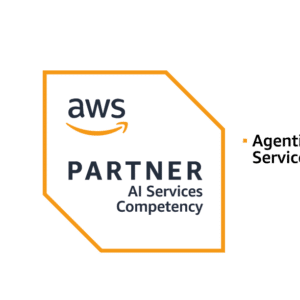
Businesses suffer a staggering $1.7 trillion loss annually due to poor IT infrastructure efficiency. In our digital age, making IT operations more efficient is essential for competitiveness and growth.
This section delves into the vital process of IT infrastructure optimization. We’ll highlight how this approach can streamline operations. It boosts efficiency, scales operations, and cuts costs. Finding the right strategies and solutions allows businesses to reach their peak performance.
Key Takeaways:
- IT infrastructure optimization is crucial for streamlining operations and staying competitive.
- Businesses can achieve increased efficiency, scalability, and cost reduction through IT infrastructure optimization.
- Implementing the right strategies and solutions is key to maximizing operational potential.
Understanding IT Infrastructure Optimization and Its Core Components
We will explore the core components of IT infrastructure optimization in this section. It is vital for businesses to learn about these to build a strong and efficient IT setup. With better optimization, companies can streamline their activities, grow with ease, and cut down expenses.
Core Components of IT Infrastructure Optimization
Several important elements are key in optimizing IT infrastructure. Each one plays a crucial role:
- Hardware: This includes the physical parts of IT systems, such as servers and storage devices. Picking the best hardware is crucial for top performance and dependability.
- Software: It consists of applications, programs, and systems that manage IT systems. The right software enhances operation efficiency for businesses.
- Networking: Networking sets up devices and communication protocols in IT. A well-organized network supports smooth information flow and connection.
- Data Centers: These are central for IT operations, containing servers and networking tools. Optimizing data centers involves making them secure, scalable, and efficient in power usage.
Knowing the importance of these components helps businesses focus their IT improvements. This way, they can better adapt to the fast-changing digital environments.
The Strategic Advantage of Optimizing Infrastructure
In the contemporary business world, optimizing IT infrastructure stands out as a key strategy. It offers organizations numerous advantages by connecting technology with their objectives. These benefits span from enhanced operational efficiency and productivity to a boost in overall performance.
Aligning Technology with Business Goals
Optimized IT infrastructure is customized to back the company’s goals specifically. By integrating technology with business objectives, organizations guarantee their IT systems are purposefully positioned. This approach greatly enhances efficiency, simplifies workflows, and accelerates business achievements.
Cost Reduction and Asset Management
Optimized IT also leads to cutting costs and managing assets more effectively. It lets companies reduce unnecessary spending by using efficient technologies and systems. By executing proactive strategies for monitoring, maintaining, and updating, they can save on expenses. This fosters an improved use of resources.
Enhancing System Performance and User Experience
Improving system performance and upgrading user experience are key parts of optimizing IT infrastructure. Investments in top-notch hardware, software, and networks promise smooth operations. This means less downtime, quicker responses, and dependable systems. A reliable, rapid, and user-friendly tech environment elevates both employee output and client contentment. This, in turn, builds loyalty and spurs business growth.
| Benefits of Optimizing IT Infrastructure |
|---|
| Improved efficiency and productivity |
| Cost reduction and effective asset management |
| Enhanced system performance and reliability |
| Enhanced user experience and customer satisfaction |
IT Infrastructure Optimization: Challenges and Opportunities
For businesses to reach optimal performance, they must confront and embrace the hurdles and benefits of IT infrastructure optimization. Overcoming standard obstacles allows organizations to fully exploit their IT’s potential. Identifying and hurdling common barriers unlocks the complete performance of IT setups.
Challenges in IT Infrastructure Optimization
- Many companies encounter resource scarcity, with limited budgets and a lack of IT experts. Such hurdles delay much-needed infrastructure enhancements.
- The problem of outdated systems poses a substantial barrier to optimization efforts. These old systems often don’t keep up with modern technology, limiting the advantages of optimization.
- Keeping IT systems secure against cyber threats is becoming a harder task. Ongoing security updates are essential to safeguard critical data from cyber-attacks and unauthorized entry.
- Integrating new technology into existing infrastructure is challenging. Compatibility issues and the necessity for seamless integration are major challenges in optimization endeavors.
- Organizational resistance to change can slow down infrastructure advancement. Employees who are unwilling to adapt to new technologies or processes hinder the optimization goals.
Opportunities in IT Infrastructure Optimization
In spite of these challenges, IT infrastructure optimization opens up various prospects for business improvement and growth.
- Scaling operations is chief among the benefits of infrastructure optimization. With scalable technologies, businesses can easily adjust to evolving needs and future expansions.
- Optimizing IT cuts down on costs by eradicating inefficiencies and improving processes. This allows organizations to save significantly through technology-based solutions.
- Optimization introduces novel tech to boost productivity, collaboration, and innovation. Cloud computing, virtualization, and automation stand as key innovations to drive efficiency and growth.
- By streamlining operations, businesses can better use resources and enhance their overall efficiency. This boost in productivity accelerates time-to-market and operational speed.
- An agile IT structure empowers companies to swiftly respond to market shifts. Flexibility ensures organizations can quickly adapt and compete effectively.
Mitigating the challenges and seizing the IT optimization opportunities places businesses at an advantage in the digital sector. Through the adoption of scalable technology solutions and strategic deployment, companies can streamline their processes for sustained growth.
| Challenges | Opportunities |
|---|---|
| 1. Limited Resources | 1. Scalability |
| 2. Legacy Systems | 2. Cost Reduction |
| 3. Security Risks | 3. New Technology Solutions |
| 4. Technology Integration | 4. Improved Efficiency |
| 5. Resistance to Change | 5. Enhanced Agility |
Adopting Cloud Solutions for Agile Operations
Cloud solutions transform business operations with their agility. We’ll delve into the benefits of cloud migration, comparing AWS with competitors. And we’ll emphasize the necessity of scalable, flexible IT in the cloud.
Benefits of Cloud Migration
Moving to the cloud offers businesses a trio of advantages: flexibility, scalability, and cost efficiency. With cloud operations, organizations gain the ability to:
- Slash infrastructure expenses by ditching on-premises hardware and its upkeep.
- Adjust IT resources as needed, scaling with demand for the best performance and savings.
- Utilize the latest cloud tech and services, catapulting innovation and gaining competitive edges.
- Facilitate seamless data access and collaboration anytime, anywhere.
- Boost data security and recovery options through advanced cloud infrastructures.
Choosing Between AWS Cloud and Other Providers
While AWS Cloud stands out for its breadth of services and renown, alternative providers may suit specific needs better. Various aspects, such as:
- Offering niche services that target unique business goals.
- Varying cost structures and pricing strategies.
- Compliance and security features that address business regulations.
- Customer support reliability, assisting in maintaining a resilient cloud environment.
Implementing Scalable and Flexible IT Systems
Cloud’s elasticity grants companies the power to adjust resources on the go and respond to changes promptly. This allows them to:
- Scale resources seamlessly to handle peak demands, ensuring smooth operations.
- Optimize performance and minimize costs by smartly managing resources.
- Stay nimble to market adjustments by adding or removing resources as required.
- Speed up software deployment and development through agile and DevOps practices.
By adopting scalable, flexible IT systems, companies can significantly improve their efficiency, agility, and competitive edge. This is crucial for keeping up in a fast-evolving market.
Network Security and Data Management Best Practices
In today’s digital world, network security and data management are key for any company. With cyber threats evolving and data growing, it’s vital to use the right methods. These steps secure sensitive info and lower risks. By putting in place strong network security and data management, companies can keep their IT safe.
Several network security steps stand out:
- Regularly updating and patching software: This is crucial to handle vulnerabilities and stop threats.
- Implementing strong access control measures: It includes strong passwords, multi-factor checks, and careful access rules to keep data safe.
- Encrypting sensitive data: Encrypting data protects it, making it unreadable to unauthorized viewers.
- Monitoring and logging network activity: Watching network behavior and keeping logs help catch and stop security issues quickly.
Data management plays just as big a role. Here are data management’s top tips:
- Classifying and categorizing data: Sorting data by importance helps focus protection where it’s most needed.
- Implementing data backup and recovery solutions: By backing up data, it’s possible to quickly recover from breaches or data loss.
- Establishing data retention and disposal policies: Clear policies for keeping and getting rid of data lower the risk of misuse.
- Providing employee training and awareness programs: Teaching staff about data safety and handling can create a secure company culture.
Following these tips helps companies boost their security. It’s critical to keep updating these methods. This way, businesses stay prepared against new security threats, keeping their defenses strong.
Conclusion
In this article, we delved into the critical role of IT infrastructure optimization and its influence on streamlining operations for companies. Focusing on this area boosts efficiency, scalability, and cost reduction. These improvements are vital for organizational success.
IT optimization isn’t just about creating efficiency. It does something more profound. It connects technology with business strategies. This link enhances output and effectiveness, keeping companies one step ahead in the digital age. Cloud solutions bring the added advantages of being supple, scalable, and cost-effective.
As corporations move towards tech innovation and digital change, they must place utmost importance on network security and data management. This choice safeguards sensitive data, diminishes threats, and protects the IT infrastructure’s core.
To wrap up, by highlighting IT infrastructure optimization and its fundamental elements, integrating cloud solutions for adaptability, and giving precedence to network security and data management, businesses ready themselves for a bright future. Their focus on operational efficiency, scalability, cost efficiency, and strategic technology utilization is what keeps them competitive.
FAQ
What is IT infrastructure optimization?
IT infrastructure optimization is the process of refining operations. It focuses on enhancing efficiency, scalability, and the cost-effectiveness of IT systems within an organization. This involves perfecting hardware, software, networking, and data centers, aiming for peak performance. The goal is to unlock the full potential of the organization’s IT framework.
What are the core components of IT infrastructure optimization?
The key elements of IT infrastructure optimization are hardware, software, networking, and data centers. Each plays a crucial role in facilitating the organization’s digital operations. Understanding their functions enables businesses to pinpoint areas for enhancement. This identification allows for the implementation of specific tactics to streamline operations.
What strategic advantages can be gained from optimizing IT infrastructure?
Streamlining IT infrastructure confers several key strategic benefits. It harmonizes technological processes with the company’s objectives, which boosts efficiency and productivity. By doing so, this optimization leads to lower operational costs and improved management of resources. Furthermore, it heightens system performance and the overall user experience. These improvements ultimately drive the business towards greater success.
What challenges and opportunities are associated with IT infrastructure optimization?
Optimizing IT infrastructure brings with it both hurdles and chances for growth. Challenges may originate from the complexity of technological solutions, limitations in scaling, and hurdles in implementation. Yet, it also presents opportunities for adopting cutting-edge technologies and expanding operations for enhanced efficiency and developmental strides.
What are the benefits of adopting cloud solutions for agile operations?
Turning to cloud solutions yields a myriad of perks for agile operations. It boosts flexibility, scalability, and efficiency while driving down costs. Cloud migration allows businesses to fine-tune their IT infrastructure. It facilitates the deployment of systems that are both adjustable and robust, keeping pace with the evolving requirements of the organization. A careful evaluation of cloud providers, such as AWS Cloud, is critical for making well-informed choices.



